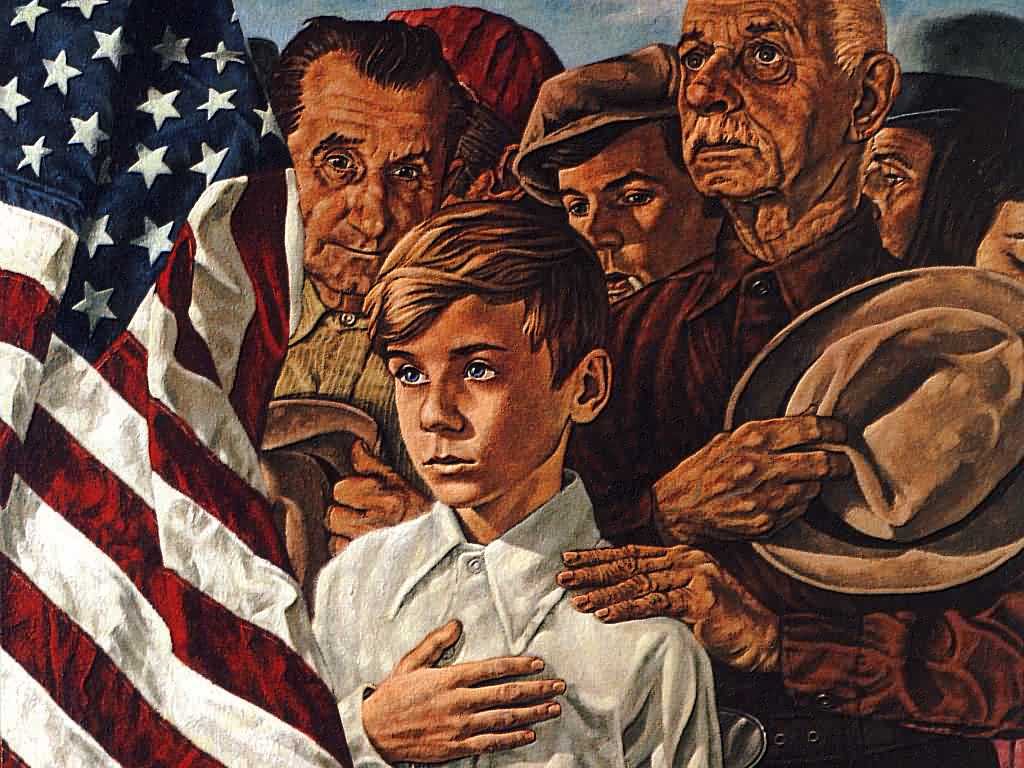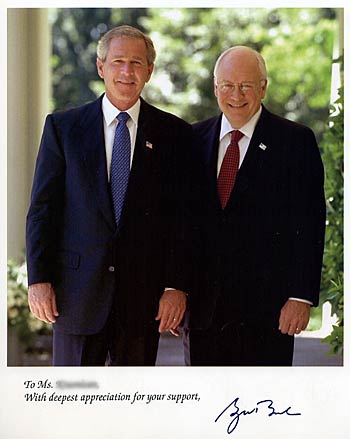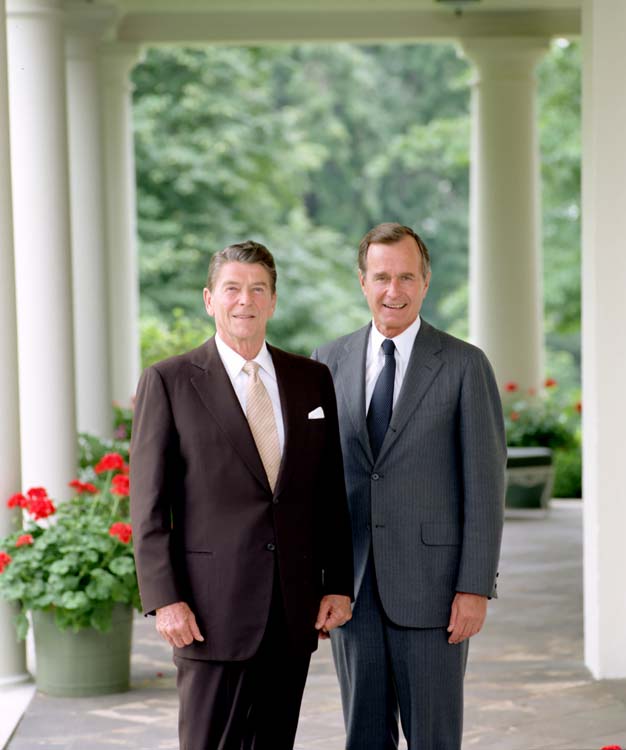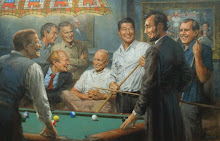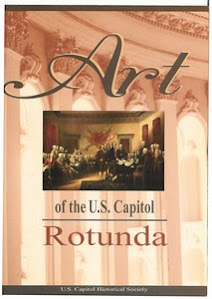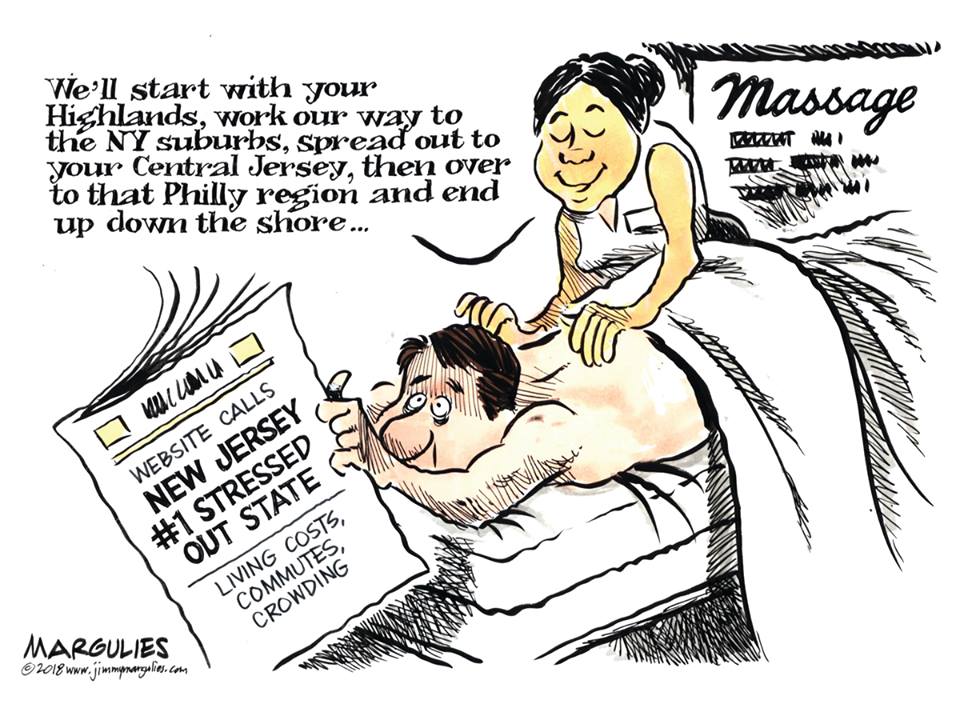Source: http://www.corpwatch.org/article.php?id=4030
Panos Media Briefing No. 13
September 1st, 1994
In the North, smoking is on the decline. Only 3 out of 10 adults smoke, compared with around 6 out of 10 forty years ago. Smoking is no longer socially acceptable in many homes, public places and work places. Most restaurants have smoke-free areas, many theatres, cinemas, trains and planes have become smoke-free.
Smoking-caused disease kills around 2 million people a year in the North, and most people in industrialised countries now recognise that smoking can kill them.
Tobacco companies are on the defensive as chronically ill smokers begin to sue them for the damage they allege has been caused to their health. Some doctors believe that within 30 years, smoking in industrialised countries could be very largely a habit of the past. Faced with declining markets in the North, the tobacco industry is moving South.
In the South, smoking is on the increase. 50% of men and 8% of women now smoke. Forty years ago, virtually no women in the South smoked and only about 20% of men. A million people in the South are dying each year in developing countries from smoking-caused disease. According to the World Health Organization, "on current smoking patterns" this will grow to around 7 million within 30 years. (1)
The tobacco industry claims that the crop makes an important contribution to the Third World. In the North, tobacco largely means smoking, but in the South the issue is more complex -- tobacco can involve exports, repayment of foreign debt, jobs, land, trees, soil fertility. Forty-three developing countries earn foreign exchange by exporting tobacco . Especially for a government with a foreign debt problem, the crop can pose a dilemma.
But most developing countries do not export tobacco . Among exporting countries, apart from Malawi and Zimbabwe, the crop earns only a tiny part of their foreign exchange. And the negative effects of the crop, such as environmental costs and the cost of treating smoking-caused disease, are rarely calculated; as a result, governments of developing countries may be under an illusion that tobacco is benefiting the economy when the reverse is true. But governments in the South often find it hard to tackle the powerful tobacco industry with multi-million marketing budgets.
Anti- tobacco campaigners argue that profitable alternatives to tobacco exist but have received little attention. Through their development aid programmes, industrialised countries have helped developing countries to increase their output of tobacco , rather than help them switch to suitable alternatives. Through the imposition of structural adjustment programmes, the World Bank has encouraged governments to support farmers who grow crops for export. While the Bank no longer lends directly to tobacco production projects, its adjustment policies have encouraged additional output.
CONTENTS
Production
Tobacco industry view
But are there profits for farmers?
Are there profits for developing countries?
"Tobacco deforestation"
An area examined
Land use and degradation
Pesticides: "Do not smoke in the seedbed area"
A family burden
Focus on the South
Women smokers
Child smokers
Advertising restrictions
Canada's successful programme
International help
KEY FACTS
Tobacco is one of the world's most controversial crops. The information in this document is thought to be factual and accurate, although some figures may be disputed. Increased availability of accurate information will help the South to resolve its dilemma over the crop.
Production
104 countries, 77 of them developing countries, produced 8.043 million tonnes (mt) of tobacco in 1992. This was more than a million tonnes higher than in 1988-90. All the increase came from developing countries.
6.18mt of tobacco was grown in the South on 4.3 million hectares of land; around a quarter was exported to industrialised countries. About half the developing countries that grow tobacco do not export the crop.
The five largest tobacco producers are China 3.16mt, US 0.76mt, Brazil 0.58mt, India 0.58mt and Turkey 0.32mt, Between them they account for nearly two-thirds of global output. Brazil increased tobacco production by 41% between 1989 and 1992, Africa by 13%.
About 18 million workers are involved in the tobacco industry worldwide, including 11 million growers. For many the crop is unprofitable. While world tobacco prices are depressed, the cost of inputs such as fertiliser is rising.
World production of tobacco exceeded consumption in 1992 and 1993. World stocks account for 85% of a year's output.
Trade
Among agricultural products, tobacco is the developing world's eighth largest export earner.
Forty-three developing countries export tobacco . Nine of them account for over 90% of the South's foreign earnings -- Argentina, Brazil, Turkey, Thailand, India, China, Indonesia, Malawi and Zimbabwe. For all, except for Malawi and Zimbabwe, tobacco accounts for less than 2.2% of foreign earnings.
In 1992, developing countries exported 15% more tobacco than in 1991, but earned less -- US$ 2,794 million against US$ 2,951 million. They imported tobacco products worth US$ 1,292 million. (The figures do not take into account imports, such as fertilisers, that are needed to grow tobacco ).
World tobacco prices are fluctuating widely. They fell by around a third in 1993 and rose by about the same in 1994. The UN Food and Agriculture Organization predicts a depressed market.
Health
Tobacco is set to kill substantially more people in the South than in the North.
3 million people a year now die from smoking-caused disease, a third of them in developing countries. This could rise to 10 million by 2025, 7 million of them in developing countries -- who would then account for 70% of all " tobacco " deaths.
- Chief causes of " tobacco " death are lung cancer, heart disease and stroke
s. Tobacco can cause chronic bronchitis, emphysema, ulcers and pregnancy complications.
Environment
Tobacco causes deforestation, because the industry does not grow enough trees to replace those used for curing (drying out) the crop. About half the South's output of tobacco leaf is cured with wood.
Tobacco growing can cause soil erosion and deplete soil nutrients. It uses fertilisers and pesticides which can affect local water supplies.
TOBACCO GROWING: GAIN OR LOSS?
Production
Tobacco (Nicotiana tabacum) originated in South America. It was originally used in rituals and ceremonies, and first grown commercially in Central America in the early sixteenth century. From there it spread to Europe, and by the early seventeenth century, to the Middle East, Africa and the Indian sub-continent.
To Ministries of Agriculture, there is money in tobacco , and production has increased in recent years. Seventy-seven developing countries produced 6.18mt of tobacco in 1992 -- over a million tonnes more than in the period from 1988 to 1990. About 4.3 million hectares of arable land are now under tobacco in the South.
Developing countries exported 929 mt of tobacco in 1992, just under one-sixth of their total output. This was over half world tobacco exports of 1,680mt. The exports earned developing countries US$ 2,794 million, making tobacco their eighth largest agricultural export earner.
According to the UN Food and Agriculture Organization (FAO), the South exported 15% more tobacco in volume terms in 1992 than in 1991, but earned less. The reason was the fall in world tobacco prices; these are likely to stay depressed. (2)
To Ministries of Health, tobacco is fool's gold. They point to the cost of treating smoking-caused disease, and to the workdays lost because of smoking illnesses. They urge legislation to control smoking before the disease and the deaths it causes reach epidemic proportions.
Over 80% of tobacco production in the South is for domestic consumption. China, the largest grower, produced 3.16 mt in 1992, nearly 40% of world output, exporting only 79,000 tonnes.
The South's second biggest producing country, Brazil, increased tobacco production by 41% between 1989 and 1992 to 583,000 tonnes, of which 242,000 tonnes was exported.
In Africa, two countries dominate production and exports. In 1992, Zimbabwe and Malawi earned nearly 95% (US$ 743.5 million) of Africa's export earnings (US$ 789 million).
Six transnational corporations, American Brands, BAT, Philip Morris, R.J.R Nabisco (formerly R.J. Reynolds), Rothmans and Japan Tobacco, are responsible for around 70% of global tobacco production (excepting China which is a state monopoly). They often contract out production to small farmers, giving advice, selling them the necessary seeds, fertilisers and other inputs, and buying the dried leaf.
For the first six months of 1994, BAT reported an 8% rise in profits from tobacco to 576 million, "even though trading conditions remained difficult in a number of markets". (3) Higher profits came from BAT companies in South and Central America and the Caribbean; results in Asia "were mixed", while profits from Africa "were maintained".
According to Simon Chapman, author of Tobacco Control in the Third World: a resource atlas, "between 1985 and 1992, BAT made UK 299 million in profits from African operations -- an average of UK 43 million a year". (4)
Tobacco industry view
The tobacco industry claims that cultivation of the crop is a major source of rural employment, and that it constitutes an important source of foreign exchange for many developing countries. It claims that the global market for tobacco is continuing to expand, with an annual increase of around 2% in new smokers in developing countries in the past decade.
Much tobacco farming is only for limited periods of the year, claims the industry, and uses land which is often unsuitable for other crops. It claims that tobacco is more profitable for farmers than other crops.
The industry also claims that tobacco is a "teaching crop" which teaches farmers good practices, and that raising a good quality crop demands a high degree of care and technical skill on the part of the farmer.
But are there profits for farmers?
Under contract with BAT (Uganda) Ltd, John Angiepado, a small farmer in Arua in the West Nile region of the country, sold 200 kg of tobacco in 1990 for 100,000 Ugandan Shillings (about US$ 100) from three acres of land. For this, he and his family worked hard over the nine month tobacco preparation and growing season. The earnings he regarded as a pittance. "I don't know what to tell my children and wife who worked so hard to produce the tobacco ." (5) Yet this level of earnings seems about average in Uganda.
In some developing countries, Zimbabwe for example, most tobacco is grown on large plantations and farmers sell their product at an annual auction. Although these farmers own large areas, they still have no control over prices. In Uganda, as in most countries in the South, however, tobacco is grown by small farmers on plots of around half a hectare. They sell their cured tobacco to a company, and again have no say over the price.
For these smaller farmers, contractual arrangement with tobacco companies are common. BAT (Kenya) Ltd, for example, has a contractual arrangement with around 12,000 small farmers to buy their tobacco . The company sells farmers a package deal (usually on credit) that includes seeds, fertilisers, pesticides, and technical advice.
Farmers have to cure the leaf before selling to the company. They build their own curing barn -- a thatched hut with horizontal poles to hang the leaf, with a furnace for the wood. Curing can take from between seven to ten days, during which time the barn has to be kept at a constant temperature, around 35oC. It is not uncommon for families to sleep around their barns at curing time.
The price that farmers receive for their leaves is dependent on the company's evaluation of its quality, and ranges from around 20-49 Kenya Shillings a kilo (about UK 25-61p). There is no independent assessor. The farmers are powerless to do anything about the price the company offers; they have no option but to take it or leave it.
According to Simon Chapman, the National Tobacco Authority in the Philippines has set a floor price for tobacco leaf of 20 pesos a kilo (about UK 50p). But Philip Morris and R. J. Reynolds, who jointly control about 67% of the country's cigarette market, insist on paying farmers only 7 pesos a kilo (about UK 17p). (6)
According to Chris Palabay, spokesman for Solidarity of Tobacco Planters Against Exploitation, interest rates for tobacco growers in the Philippines for a four to five year loan "range from 75-100%". (7) Debt could explain why many farmers continue to grow tobacco . Many growers in Kenya say they only stay with the crop because they owe money to BAT.
Tobacco in developing countries is normally grown in rotation with crops such as maize; it is harvested about 5 to 6 months after planting. Farmers grow tobacco because it appears to offer a good return. But this is being increasingly questioned. In 1993, world prices of tobacco fell by about a third, because supply was running ahead of consumption. While prices recovered in 1994, the FAO's Commodity Outlook says that global tobacco stocks are high -- 85% of a year's output. Even though some countries are "making efforts" to decrease production, it expects prices to remain depressed. (8)
World tobacco prices over the last 10 years have stagnated in money terms and fallen in real terms. The average price for flue-cured tobacco between 1984 and 1986 was 372 US cents a kilo. In 1992, it was 381 cents a kilo; 1994 prices seem broadly in line. Assuming an annual inflation rate of 4%, tobacco prices have fallen in real terms by 50% over the last decade.
This explains why growers face lower prices. At the same time they are having to pay more for inputs. In many countries, the cost of fertilisers and pesticides has increased sharply (in Kenya by 100%) because of the withdrawal of subsidies under structural adjustment programmes.
Falling prices over the last 10 years, plus rising costs, suggest that tobacco growing is a poor prospect for the South's farmers.
While returns from tobacco have become uncertain and low, farmers have the advantage that the companies usually pay quickly, which is not always the case with state purchasing bodies. But other crops -- maize for example -- now seem to offer farmers a higher return (see page 10).
Are there profits for developing countries?
Forty-three developing countries export tobacco , with nine countries, Argentina, Brazil, Turkey, Thailand, India, China, Indonesia, Malawi and Zimbabwe, earning over 90% of the South's foreign earnings -- US$2,526 million out of a total of US$2,794 million. For all these countries, except for Malawi and Zimbabwe, tobacco accounts for less than 2.2% of foreign earnings. It is a small part only of their earnings.
The remaining 34 developing countries that export tobacco earned US$ 267 million between them -- an average of less than US$ 8 million each. The role of tobacco exports in the economies of developing countries needs to be kept in proportion.
Main tobacco exporters (1992, US$ million)
| Total export earnings
(all merchandise)
| Earnings from
tobacco | Tobacco earning as a
% of total earnings |
Argentina
Brazil
Malawi
Zimbabwe
Turkey
India
Indonesia
Thailand
China
|
12,235
35,956
383
1,235
14,715
19,795
33,815
32,473
84,940
|
143
804
293
450
309
163
81
142
141
|
1.2
2.2
76.5
36.4
2.1
0.8
0.4
0.4
0.17
|
Sources: UNCTAD Commodity Yearbook, 1994 and World Development Report, 1994, of the World Bank.
Most developing countries are net importers of tobacco , and are spending scarce foreign exchange on a product with a proven record of damaging health. The rise in smoking in their countries means that if current smoking patterns continue, more scarce foreign exchange will have to be devoted to importing tobacco products.
Tobacco companies also pay taxes. But again all is not what it seems. If the 4.3 million hectares in the South now under tobacco grew other crops, then taxes would be paid and foreign exchange could be earned on those crops. For some countries, where tobacco is an established foreign earner, a switch to other crops would, however, take time and the investment of considerable resources.
The key question is whether tobacco is yielding overall profits for developing countries, after wider costs, such as the cost of treating smoking-caused disease, are taken into account but more country studies are needed if the facts are to come to light.
In Canada, a research study of tobacco 's costs and benefits shows that benefits amount to Can$ 3 billion a year and that costs, including physicians services, hospital bills, drugs and administrative services, come to Can$ 2.4 billion. To this another Can$ 1.5 billion can be added, say the study's authors, for the loss of productivity caused by smoking related health disease. The tobacco industry therefore costs Canada almost Can$ 1 billion a year. (9)
The cost of smoking in Egypt was estimated for 1981/2 at US$ 1,352.6 million; the economic benefits were only US$ 764 million. (10) According to the 30th May 1992 issue of China Daily, national health authorities in Beijing report that China gained US$ 4,000 million in tobacco sales in 1989, but that cigarettes cost the country over US$ 5,000 million (to treat smoking-caused disease). (11)
HEALTH -- OR EXPORT REVENUE AND TAX?
The health of a country's people is difficult to quantify in profit and loss terms. But health is something that a responsible government will always protect. In purely economic terms, a healthy population means a more productive workforce; it means also that less money is needed for health care services.
A government that allows an economic activity that seriously damages people's health is open to charges of irresponsibility.
In the South, life expectancy is lower than in the North, and poverty could kill before tobacco . But tobacco can make people poorer by worsening their health.
Until 1950, deaths from smoking-caused disease were negligible, say Richard Peto and Alan Lopez of the WHO's Tobacco or Health Programme. But a million people a year in the South now die from smoking-caused disease, and the number is set to grow massively. If current smoking patterns continue, warns the WHO, by 2025, 7 million people a year in developing countries will die from diseases caused by smoking.
A recent report found that, worldwide, half the people who smoke will die because of their habit.
In countries where smoking is a long-established habit, about 90% of lung cancer, 30% of all cancer deaths, 20-25% of coronary heart diseases and strokes and over 80% of chronic bronchitis and emphysema are attributed to tobacco .
The problem is spreading to the South. Dr Keith Ball, former chairman of Action on Smoking and Health (ASH) says that 30 years might elapse before tobacco begins to kill. But already in China, lung cancer has become a serious national problem. In Zimbabwe, at the Mpilo Hospital in Bulawayo, lung cancer, resulting from high smoking rates, has become one of the commonest complaints. In Sudan, coronary heart disease has become one of the most common causes of death.
Other smoking-caused health problems include respiratory diseases, peptic ulcers and pregnancy complications, including low birth weight. Among malnourished mothers, low birth weight threatens children's lives. Children born to smoking mothers also risk impaired physical and intellectual development.
"Many developing countries lack well-established vital statistics systems making it difficult, if not impossible, to detect tobacco -related increases in mortality", say Goodland, Watson and Ledec. (12)
According to the January 1994 Cessation News of the International Agency on Tobacco and Health, smoking in Britain causes 20 times more deaths than traffic accidents and 34 times as many deaths as kidney failure.
The study of Egypt (referred to above) found that tobacco yields the country about UK 230 million a year in terms of exports, taxes, value-added and wages. But tobacco costs the Egyptian economy around twice that much in imports, spending on tobacco products, and the cost of treating smoking-caused disease.
Weighing tobacco 's health hazards against its economic benefits, former US President, Jimmy Carter, said in the Washington Post, that the argument that continuing to smoke would safeguard tobacco industry jobs was immoral, besides being factually wrong.
THE ENVIRONMENTAL COSTS OF PRODUCTION
"Tobacco deforestation"
Most tobacco in developing countries is grown in semi-arid areas where trees are sparse. The industry claims this is one of the benefits of the crop. But the disappearance of yet more trees can be very serious; it can remove the land's natural protection and turn food-growing land into a barren waste.
About half the South's output of tobacco leaves is cured (dried out for cigarette production) with wood. Trees from a hectare of land may be needed to cure one hectare of tobacco . A study commissioned by the tobacco industry looked at it another way and found that an average of 7.8 kg of wood is needed to cure 1 kg of tobacco . It is clear that at present, tobacco causes a serious loss of trees.
The Economist Intelligence Unit says in a report Tobacco and Food Crops Production in the Third World, "one of the major consequences of tobacco production in the Third World results from the considerable energy requirements of the flue-curing and fire-curing processes...as such, tobacco is a contributory factor in some countries to the problems of deforestation now being encountered.
The clearing of forest land opens the way to erosion of the soil and other environmental repercussions which ultimately reduce the productivity of adjacent agricultural land". (13)
This is a crucial point. Tobacco causes trees to be axed which in turn can damage land and a country's food production and supplies.
Deforestation is one of the world's most pressing problems, and according to the FAO, it is getting worse. Forests act like a sponge, releasing water slowly to the land around. When forests go, a natural regulator goes and flooding, and drought, become more likely. At a local level deforestation can increase flooding, affect food output and the local climate; at the global level, many scientists believe it is changing the world's climate and contributing to global warming. Tropical forests are home to valuable wild plants which are vital for breeding new strains of crops.
Tobacco only causes deforestation, however, because the industry does not grow enough trees to fuel the curing barns. The industry claims to be encouraging reforestation and afforestation. In Kenya, for example, BAT says that farmers can only become tobacco farmers if they agree to plant 1000 eucalyptus trees a year on their land. But there are problems. The average smallholder in Kenya has less than four hectares of land. If he or she plants tobacco , that might take up half a hectare and the trees a further hectare. Land for food and other purposes is squeezed. Furthermore, many farmers prefer to use trees such as eucalyptus for building purposes, and so continue to cut native forest for tobacco curing.
Twelve years ago, a former senior employee of BAT Kenya alleged: "the company is shouting about massive tree planting but this I'm afraid is nothing less than
an outrageous attempt to veil the whole problem. There can be no argument that trees in the tobacco producing areas are being felled willy-nilly and that in the not too distant future, there won't be any left at all. The trouble is that BAT, as well as the farmer, can get away with it and they do". (14) It is not clear how much has changed since this statement was made.
Even fast growing trees can take five years to grow. Many farmers do not have time to be interested in planting trees today that will be ready to cut in about five years time. They have rather more pressing problems -- such as growing enough food to make sure that their families survive today.
Deforestation in Malawi, the African country most dependent on tobacco for export earnings, is not well documented but could be reaching a critical level. Zimbabwe, by contrast, uses mostly coal to heat tobacco curing furnaces.
Critics allege that tobacco deforestation is also serious in Brazil, one of the world's biggest producers. In Smoke Ring: The Politics of Tobacco, Peter Taylor speaks of a visit to a farm in Santa Cruz, Brazil. "There were once forests around the farm", he writes, "but they have been cut down for fuel, mainly to cure tobacco ". The country's 100,000 tobacco farmers, estimates Taylor, need the wood of 60 million trees a year. (15)
Tobacco production is putting an additional strain on tropical forests and affecting food supplies in some of the world's hungriest countries.
In countries with limited land areas, there is likely to be an increasing problem with allocating land to grow trees for burning in tobacco curing barns. In larger countries, there is at least more space. The industry claims that in Brazil, 24.7 million trees were used for tobacco curing but that 217.5 million new trees were planted. But it does not say how many survived. A high failure for new tree plantings is common. (16)
The industry also claim to be designing more efficient curing barns that use less fuel. But it has generally rejected the idea of using solar barns. These were first developed in the 1970s; a prototype was tested by BAT and a spokesman said it gave a "good cure". But solar barns are not being encouraged, says the industry, because they would cost the farmer more. Nor is central curing (collecting the uncured leaf from farmers and curing it centrally) widely practised. But tobacco companies would save woodfuel, and offset criticism, by collecting the uncured tobacco leaf from farmers and curing it in a central location. Both solar and central curing would save huge amounts of wood.
An area examined
Tobacco deforestation is often localised, happening in specific areas. The people of those areas know the detrimental effects on them, even if their government does not understand and even supports the axing of trees for the curing barns because they think it helps the country's economy.
A Panos Institute publication, Uganda: Paying the Price of Growing Tobacco by Ogen Kevin Aliro considers the cost of growing tobacco in an area of Uganda, and illustrates how the crop can inflict damage on forests and food output. (17)
Some four-fifths of Uganda's tobacco is grown in the West Nile region in the north west of the country. Some 10,000 small-scale farmers in the area grow the crop for BAT, which has a monopoly on tobacco in Uganda. The company supplies farmers with inputs such as fertilisers, on credit, and buys the cured tobacco from them.
The report says that "the most striking effect of tobacco -growing is the near depletion of both natural and planted forests". Planted forests in Uganda covered 7,225 hectares in the early 1970s, it points out; this has now been reduced to 3,000 hectares "and some valleys have been left with only relics of their former forests".
The area worst affected by deforestation in West Nile is Maracha. "If nothing is done in the next five years, Maracha will be a desert", a former district administrator pointed out. Deforestation has caused wells and streams in the area to dry up, forcing people to walk further in their search for fuel. Women, already working long hours, have shouldered most of this extra burden.
As trees have been axed, so soil has less cover and is more likely to be washed away in heavy rains. "Farmers complain of falling soil fertility and reduced crop yields", says the study. BAT says that trees are being replanted in Uganda and that it is improving the efficiency of barn furnaces to reduce wood consumption.
Some tobacco farmers in the country are so short of wood for their barns they are buying it from up to 50 km away, which is eroding their earnings from the crop. The average farmer who grows tobacco in Uganda "has not done well" from the crop, says the Panos report. The "major beneficiaries" are BAT and the government.
Land use and degradation
According to the FAO, Malawi has 4.3% of its land under tobacco , Zimbabwe 2% and China 1%. While these percentages are small on the national scale, they can rise dramatically in specific areas, where peasant farmers have been persuaded to put a sizeable part of their land under tobacco . Dr Judith MacKay director of the Asian Consultancy on Tobacco Control in Hong Kong says this "minor" use of land denies 10-20 million people food. "Where food has to be imported because rich farmland is being diverted to tobacco production, the government will have to bear the cost of food imports", she points out. (18)
Tobacco occupies land for longer periods than many crops. From planting to harvest can be five or six months, whereas maize (a possible substitute) grows in 4 months. (Prior to planting the farmer has to prepare tobacco seeds for planting, which needs another 3 months. See below).
In semi-arid areas, where tobacco thrives, the loss of trees can make land more vulnerable to desertification and unfit for agriculture. When trees go, water tables can be lowered, springs dry up, wells are drained and even rivers can be threatened.
Eucalyptus, the tobacco 's industry favourite tree, is highly controversial. It grows quickly, even in dry areas, by drawing on underground water. But its fast growth can be at the expense of the water-table. If a lower water-table results, then the ability of land to grow crops can be damaged.
Tobacco growing also affects soil nutrients. It depletes nutrients "at a much faster rate than many other crops, thus rapidly decreasing the life of the soil" say Goodland, Watson and Ledec. (19) The table lists tobacco and three crops that could be substitutes.
Depletion of soil nutrients by tobacco and other crops (loss in kg/ha)
1 tonne
per hectare | Nitrogen
| Phosphorus
| Potassium
|
Tobacco
Coffee
Maize
Cassava
|
24.4
15.0
9.8
2.2
|
14.4
2.5
1.9
0.4
|
46.4
19.5
6.7
1.9
|
Source: Van Wambeke, quoted in Goodland, Watson and Ledec, Environmental Management in Tropical Agriculture
Because it depletes nutrients at a heavy rate, tobacco requires regular inputs of chemical fertilisers. But this cuts the farmers profits. In Kenya, BAT claims that link men are persuading farmers to buy more fertilisers and pesticides than they need.
Soil erosion is a severe problem in a number of tobacco areas. In parts of the tobacco -growing Arua district of Uganda, soil erosion in the form of sheet erosion "is now very evident" says Ogen Kevin Aliro, "top soil has been washed away leaving a hard pan on the surface". (20)
In some countries, Malawi, Sri Lanka, Zambia and Zimbabwe, for example, tobacco often grows on hilly land, and this speeds up soil erosion. Such erosion can have wider damage. In Sri Lanka, tobacco grows on hillsides close to the Mahaweli river. The demand for trees has caused the hillsides to become almost bare, and without the protection of trees, top-soil is washed into the river. This could lead to severe problems downstream, with the build-up of soil in the river causing silt problems for a huge dam scheme, the Victoria, built in the 1980s.
Pesticides: "Do not smoke in the seedbed area"
Tobacco needs heavy applications of pesticides. An instruction leaflet given to tobacco farmers in Kenya lists BAT's recommended seedbed programme for the crop (preparing seeds for planting). From making the seedbed to transplanting the seed in the field takes about three months. During that times, 16 applications of pesticide are recommended. This again eats into the farmers' profits.
Farmers are told in the leaflet "do not smoke or take snuff in the seedbed area. It spreads disease." The health of the crop is one thing, but figures on how many farmers suffer, and even die from pesticide poisoning, are rarely made public.
"Besides being hazardous to users, these chemicals can contaminate village water supplies", say Goodland, Watson and Ledec. (21) But figures are rarely published on poisonings that occur because pesticide has run off fields into water courses and local supplies.
A family burden
There are other costs to people. Women, in particular, carry the heaviest burden of small-holder tobacco growing in developing countries. In addition to carrying out farming-related tasks, they have to collect wood for the barns as well as for domestic use. Meals become irregular and sparse during the busiest months. Vegetable gardens and markets are neglected.
Tobacco growing often makes use of child labour, and this has serious consequences for education. Attendance by children at school becomes more erratic. "Tobacco growing in West Nile (Uganda) is a family undertaking", says Aliro, author of the Panos report on Uganda. "children are needed at all stages of cultivation and curing, particularly for tasks such as weeding, watering, stringing and sewing sheaths of tobacco leaves together for hanging along flue-pipes in a barn". (22)
He says that fewer children of tobacco growers attend school compared with children from non- tobacco -growing families, and also that they start primary school at an older age. Even when school fees have been paid, children are kept at home in periods of peak activity in the tobacco fields.
Child labour is not unique to tobacco . In conditions of poverty, other crops also make use of child labour. But tobacco 's longer growing season, and the curing process, seem to place particular strains.
It is not just families of tobacco growers who bear a heavy burden. Away from the fields, families of smokers can also be affected. Heavy advertising of tobacco can convince the poor to smoke more and mean they have less money for food. People on limited income who start smoking may have to use money that they might have spent on food or health care, to buy cigarettes. According to Dr D. Fami-Pearse of the University of Lagos, people in Bangladesh on low incomes who have been persuaded to smoke five cigarettes a day, had to cut food purchases by 15% which reduced their daily calorific intake by 300 from an already low 2000. (23)
ARE THERE ALTERNATIVES TO TOBACCO?
The tobacco industry claims that tobacco revenue compares "very favourably" with the return from other cash crops. (24) The International Tobacco Growers Association claims there are no economically viable alternatives. But such claims are increasingly being disputed, and the debate on alternatives to tobacco is gathering pace -- stimulated by a dramatic fall in the 1993 auction price of tobacco in Zimbabwe and Malawi.
There are alternatives to tobacco . Many crops can grow in land that is now under tobacco -- they include the majority of grain crops and vegetables. Sugar cane, bananas, coconut, pineapples and cotton could all be suitable. The most suitable alternatives will vary from country to country.
Will they give the farmer as much profit? Stagnant world tobacco prices, plus the rising cost of inputs, make the crop less profitable than it was 10 years ago. This makes alternatives more attractive.
A recent issue of Tobacco Alert, which focuses on Bangladesh, disputes the high returns claimed for tobacco . It points to the very high production costs of tobacco -- Bangladesh Taka 14,000 a hectare (US$350 approx). From sales of Tk16,000 a hectare, (US$400 approx) this means a net profit of around Tk 2,000 (US$50).
Potatoes, by contrast fetched Tk33,000 a hectare from production costs of Tk25,000, giving a net profit of US$8,000 (US$200). Cotton fetched Tk19,3000 from production costs of Tk11,500 giving a net profit of US$87,800 (just under US$200).
Writing of Zimbabwe, agriculturalist Ronald Watts says that the country has a range of possible alternatives, including fruit exports, such as citrus, kiwi, avocados and mangos, nut (macadamia, pecan and cashew) and dried vegetables. "The ideal crops for small-scale growers are those which can be sun dried, stored and sold for export at the end of the season. Paprika, chillies and various spices have proved to be the most successful so far". (25)
At a conference on tobacco in Harare in 1993, Watts said that maize has become more profitable than tobacco in terms of money invested. Maize earned Zim$ 2.53 per kilo, tobacco Zim$ 1.62 a kilo. He added that alternative crops are less risky than tobacco . Crop insurance is much less costly for alternative crops.
Dr Bernard Chidzero, Zimbabwe's Senior Minister for Finance, has told farmers "more mixed farming and less land under tobacco is needed". (26)
A United Nations initiative on tobacco , including a study of alternatives, is now underway. This consists of a "focal point" set up by UN agencies, called " tobacco or health?" to promote collaboration on the economic and social aspects of tobacco production and consumption, (it operates with the commodities division of the UN Conference on Trade and Development). A study on the economic role of tobacco is being prepared which will cover "renumerative diversification into other products or economic activities". (27) This should be the most important study to date on alternative crops.
Diversification from tobacco needs careful handling, especially for the people now employed in the industry.
THE CHANGING TOBACCO MARKET
Focus on the South
In the North, tobacco smoking has fallen by half in the last 40 years, and is becoming socially unacceptable; by the year 2000, an irreversible decline in smoking could emerge. But in the South 50% of men and 8% of women now smoke, compared with around 20% of men and virtually no women 40 years ago.
The tobacco industry describes smoking as a "legitimate adult pleasure". It views the South as the market that will keep the industry in business. The developing world has moved centre-stage for the tobacco industry. In Tobacco: Supply, demand and trade projections, 1995-2000, the FAO points to a rapid expansion of potential smokers -- people above the age of 15 -- throughout developing countries and Eastern Europe. (28)
Some of the products exported to the South by the world's large tobacco firms have been found to have a higher content of tar and nicotine (the substance which makes smoking addictive) than brands sold in the North. James Wilkinson says for example, that in Pakistan, "two of the most popular brands, Capstan and Morven each have a yield of 29 mg tar per cigarette. Tar concentrations for a range of popular cigarettes sold in the United Kingdom and in Australia in 1981 never exceeded 19 mg per cigarette". (29)
At the All Africa Conference on Tobacco or Health, Dr L. Sanwougou said that the transnational corporations were keen to expand their African market because it has the lowest tobacco consumption rate. Tobacco control experts told the conference that smoking rates could be influenced by unethical promotion, especially to women and children.
Women smokers
Non-smoking women are one of the industry's chief targets. There are big variations in female smoking rates in the South. Only 1% of women in Ethiopia and Ghana smoke, for example, compared with 35% in Senegal. The WHO warns that it is highly probable that aggressive marketing of cigarettes to women "will be intensified". (30)
The First International Conference on Women and Smoking, (held in Northern Ireland in 1992) heard of the marked proliferation of "women's brands" in recent years. These include Eve, Satin, Superslims, Ms and others. The conference noted that the advertisements for women's brands tend to portray smoking as a glamorous fun-loving activity enjoyed by independent women.
But health workers say that smoking is worse for women because of gender-related diseases such as cervical cancer, osteoporosis and reduced fertility. It is urgent, says the WHO, to counteract the "deceitful advertising" that links smoking "to images of seduction, slimness, elegance, physical fitness and emancipation".(31)
Child smokers
Young people are the prime target of the tobacco industry's bid to maintain profits. "The industry concentrates almost exclusively on children and young people to recruit new smokers", says the WHO. (32) The advertising pays off. Every day, at least another 4,000 young people start smoking.
An article in the December 1991 issue of the Journal of the American Medical Association says that very young children see, understand and remember advertising. It points out that some cartoon-style advertisements were far more successful in marketing cigarettes to children than to adults.
The April 1990 issue of Tobacco Alert points to what it calls a "particularly pernicious" form of advertising, that of depicting cigarettes or their logos on toys. The industry also promotes itself through sponsorship of sporting events that are popular with children.
The WHO believes that the media can "play a major role in combatting smoking by the young. By making them aware of peer and social pressures to smoke, they help them develop the ability to resist". (33)
CONTROL
Advertising restrictions
In most developing countries there are none of the restrictions on tobacco advertising, and the warnings on cigarette packets, that are common in industrialised countries.
Awareness of the health risks of smoking is low in most of the South. People are not aware of the risks because they are not told about them. The advertising they see tells them little or nothing about the dangers. Bans or restrictions on tobacco advertising were in place in 33 developing countries in 1990, which means there were no restrictions in three-quarters of the countries of the South. (34)
Medical associations and the WHO have recommended that cigarette advertisements be withdrawn completely from the mass media. China has banned television advertising of tobacco . In Kenya the industry recently agreed to withdraw radio and television ads -- although it continues to sponsor "cool moments", a weekly music programme.
Few governments in the South have increased tax on cigarettes, which are cheap in most countries.
Canada's successful programme
Through legislation and sharply higher taxes on tobacco products, Canada has scored an unparalleled success over smoking. Until the early 1980s, Canada faced a similar problem to the Third World today -- smoking was on the increase. But since 1983 there has been a dramatic decline -- two out of five smokers have kicked the habit. Among teenagers it is higher still -- three out of five teenage smokers have given up.
"Campaigners sought to change public policy largely through legislation, and reverse trends that were promoting tobacco consumption", said David Sweanor of Canada's Non-Smokers' Rights Association. They set about persuading legislators that the lives of millions of Canadians were at risk unless legislation was introduced.
Reducing the accessibility of tobacco was a key part of this, said Sweanor. "If you want to reduce accessibility, you have to increase the price of tobacco relative to people's incomes. Teenagers are particularly price sensitive; we have seen the most dramatic decline in consumption simply as a result of putting up taxes. This has the advantage to the government that even though fewer cigarettes are sold, they make more money in total."
In 1980 a packet of 20 cigarettes sold for just over Can$1. Chiefly because of higher taxes, the packet now fetches Can$6.
"It was also important to press for legislation which makes it harder to market tobacco to children, and to reduce the places where tobacco can be sold, such as getting rid of vending machines," said Sweanor. Tobacco advertising has been banned in Canada since 1989, and health warnings on packets of cigarettes must be a fifth of the size of front and back packet areas. This is soon to go up to a quarter of the area.
Tobacco companies are now obliged to disclose what additives they have in their cigarettes. "Philip Morris, the makers of Marlboro, stopped sending cigarettes to Canada rather than risk that list of additives becoming public knowledge", said David Sweanor.
There has also been a revolution in creating smoke-free atmospheres in public places. The national airline, Air Canada, was the first airline to ban smoking on international as well as domestic flights. Many trains, restaurants and offices in Canada are now smoke-free.
"The facts about tobacco are so one-sided", believes Sweanor, "we have an industry that is marketing a product that has no safe level of consumption, that kills when used exactly as intended, that is addictive, and virtually all new users are kids. When you have a product like that, it should not take a lot of work to get the facts through to legislators to persuade them to bring out the measures that are necessary to reduce that sort of carnage." (35)
Canada's Non-Smokers' Rights Association is a small organisation employing only a handful of people. But it has been hugely successful in persuading the government to control smoking. It claims that between 670,000 and 1,400,000 tobacco -caused deaths will have been avoided among Canadian adults as a result of price changes.
Developing countries could take similar action, although the tobacco companies may try to persuade them otherwise. Regardless of pressure the consequences of tobacco growing and consumption have to be faced, as does the fact that alternative crops will require the investment of national resources.
International help
United Nations agencies seem set to give the South more help to control tobacco and smoking. UNCTAD claims that the new " tobacco or health" focal point represents "a major step forward" in tobacco control. It will collect information from UN agencies and other international bodies on their activities and work plans related to tobacco or health.
"Solutions to the tobacco problem", says UNCTAD, "should include in addition to health, an analysis of the tobacco economy, including agriculture, trade, taxation, foreign exchange, employment and other public policy problems". (36)
The Food and Agriculture Organization is ready "to assist countries wishing to reduce their dependence on tobacco ". The World Health Organization and Unicef have adopted firm policies in favour of a tobacco -free life.
But the World Bank, the world's largest multilateral aid agency, has an ambiguous policy on tobacco . The Bank no longer gives the South loans for tobacco production, but through its structural adjustment policies it has encouraged governments to support farmers who grow crops, such as tobacco , for export. Food crop producers, by contrast, do not generally receive the same treatment. Under its World Bank guided structural adjustment programme, the government of Zimbabwe set its prices to maize farmers at very low levels in 1992, and this encouraged a switch to tobacco . On the other hand structural adjustment programmes have generally raised the prices of inputs such as fertiliser, making tobacco less economic.
With few countries in the South having a tobacco balance sheet, research is needed to determine the real economic cost of the crop and pinpoint the cost of treating smoking-caused disease and the environmental cost of tobacco .
Facing coordinated international action, the tobacco industry can be expected to step up its campaign. The industry has more money at its disposal to fight against control than the health lobby has for control. But a lot of money is not needed for a successful campaign, as the Canadian experience shows.
The problems caused by tobacco are enormous. The killer tobacco epidemic that is set to hit the South can be prevented. But the consequences of tobacco growing and consumption need to be addressed, and demand urgent action.
REFERENCES
World Health Organization Press Release, No 44, 30th May 1994
Commodity Review and Outlook, 1993-94, UN Food and Agriculture Organization (FAO), Rome, July 1994
Quarterly Report, Six months to 30th June 1994, BAT Industries, London.
The Proceedings of All Africa Conference on Tobacco or Health, Derek Yach and Harrison S., ed., Pretoria, 1994 in the paper "Tobacco trade in Africa: A Bright future indeed" by Simon Chapman.
Uganda: Paying the Price of Growing Tobacco, by Ogen Kevin Aliro. The Monitor Publications, Kampala, 1993
Tobacco Control in the Third World: a resource atlas, Simon Chapman, with Wong Wai Leng, International Organisation of Consumer Unions, Penang, Malaysia, 1990
ibid
FAO op cit.
Study by the University of Waterloo, Canada, by W.E. Forbes and M.E. Thompson.
Study presented to a Development Forum on Tobacco, Ottawa, Canada, October 1993.
"The fight against tobacco in developing countries" by Judith Mackay, in Tubercle and Lung Diseases, Longman Group, UK Ltd., London 1994
Environmental Management in Tropical Agriculture. R.J.A. Goodland, C. Watson and G Ledec. Westview Press, 1984
Tobacco and Food Crops Production in the Third World, EIU, 1983
Personal communication
Smoke Ring: The Politics of Tobacco, P. Taylor, Bodley Head, 1984
Tobacco Forum, newspaper of the International Tobacco Growers Association, February 1991
Aliro, op. cit.
MacKay, op. cit.
Goodland, Watson and Ledec, op. cit.
Aliro, op cit.
Goodland, Watson and Ledec, op. cit.
Aliro op. cit.
Paper given to the Fifth World Conference on Smoking and Health, Winnipeg, 1983
African Business, January 1989
African Farming, September/October 1993 African Farming, July/August 1993
UNCTAD Press release, 6th April 1994
Tobacco: Supply, demand and trade projections, 1995-2000, FAO, 1990
Tobacco, James Wilkinson, Penguin, 1986
WHO, Press Briefing, May 1994
ibid
ibid
ibid
Chapman, op. cit.
Interview with the author, October 1993
UNCTAD, op. cit.
The South Carolina Tobacco Legacy
Source: http://www.state.sc.us/scda/relatedaglinks/boards/tobacco/legacy.htm

Tobacco has been an important crop in the state since the colonial days. English colonists arriving from Barbados and settling near Charleston first brought tobacco seeds into the state over 300 years ago. The first permanent settlement in the new colony of Carolina (present-day North and South Carolina and Georgia) was in 1670 to Albemarle Point on the Ashley River. The colonists later laid out a capital city, Charles Town, across the river on a more defendable peninsula. The city, with its almost land-locked harbor and system of forts, would later become the most important seaport of the Southern colonies.
Since the colonists were already familiar with the island leaf culture, they immediately began producing tobacco. Only a shortage of manpower hindered greater tobacco production. To increase the labor force in South Carolina, land was offered to those who would come and inhabit the area and plant tobacco. The golden leaf prospered for the next 200 years in South Carolina until the Civil War and Reconstruction brought tobacco as well as almost all of South Carolina's agriculture, industry, and commerce to halt.
Plantations spread up and down the tidelands during the 1700's. Towns emerged and the colony was divided into North and South Carolina in 1713 by Parliament because of religious differences and lack of defense for the large area. South Carolina grew and prospered. The British Navy protected commerce, indigo was subsidized by Parliament, and rice was allowed direct export to France. South Carolina reluctantly supported the Declaration of Independence and participated in the Continental Congresses, because the colony was already thriving under good trade policies for tobacco and other products and was undisturbed by Parliamentary restrictions that the colonies to the north found infuriating. However, in March of 1776, South Carolina also declared its independence from England. After the American Revolution, South Carolina introduced regular warehouse and inspection procedures. Much of the leaf from the state was sent to Virginia and North Carolina, where processing and manufacturing centers were evolving.
With the invention of the cotton gin in the mid-1800's, many planters turned away from the leaf and toward the boll. Cotton made the slave system profitable, and federal efforts to restrict its production polarized the North and South. By 1860, South Carolina ranked third in per capita wealth in the United States, and cotton, rice, and tobacco cultivation dominated agriculture.
On December 20, 1860, South Carolina became the first state to secede from the Union and plunged headlong into the Civil War. The war proved to be a devastating blow to the people and the economy---the state's greatest tragedy. The army of the North cut a path of destruction across the state, ravaging almost half of the tobacco crop. As the textile industry developed in South Carolina during the late 1800's, agriculture in general began to decline, but tobacco made a comeback toward the end of the century after a new type of leaf was introduced into the state from its neighbor to the north.
By the end of the 19th century, the economy was renewed, and South Carolinians were again growing tobacco---the new variety, "bright leaf". Bright leaf tobacco, which turned a lemon yellow during curing, was a lighter, finer leaf and sold at premium prices. Because of the oversupply of cotton and its increasing unprofitability, "bright leaf" tobacco production spread throughout the sandy areas of the coastal plain. Tobacco acreage planted fluctuated with prevailing cotton prices.
W. H. (Buck) Daniel, a native North Carolinian and a Confederate soldier imprisoned in New York, pioneered the development of bright leaf tobacco in South Carolina's northeast Pee Dee area. He founded a supply store, the first tobacco warehouse in Mullins (Planters Warehouse), a redrying plant, and the Bank of Mullins. He also helped organize the Merchants and Farmers Bank of Marion, the first institution in the Pee Dee to make direct loans to farmers and to finance crop production.
Frank M. Rogers was also a pioneer of the bright leaf. He began planting in 1882 in Florence County, he broken even in his second year, and he made a profit in his third. In 1886, many of Rogers' neighbors joined him, and a $50 prize was offered for the best tobacco in each county. Rogers won the money.
With the increased demand by manufacturers for more bright leaf, officials, newspapers, and warehousemen promoted production. The Atlantic Coast Line Railway prepared and distributed over 20,000 pamphlets, aimed at persuading coastal plain farmers to abandon cotton for tobacco. A Charleston newspaper, The News and Observer, distributed seeds and instructions and hired professional demonstrators to advise prospective growers. Auction warehousemen from North Carolina went into the coastal plain to teach cultivation. Local growers organized markets, and in 1890 other manufacturers were persuaded to send buyers to Marion County for its first marketing season. Prior to this, growers had to send their crops to northern manufacturing centers. By 1900, South Carolina ranked sixth in the tobacco producing states. Ten years earlier, it had been 19th.
The manufacture of tobacco products in South Carolina was short-lived. At one time tobacco manufacturing employed as many as 500 people, but competition from the north proved too much for South Carolinians.
In the 1940s, South Carolina growers began to produce another type of tobacco in the northwestern Piedmont---Turkish tobacco, an aromatic type used in blended cigarettes which were popular during and following World War I. Overseas markets gradually regained preference, and South Carolina returned to bright leaf and other crops.
Today, tobacco barns still dot the Pee Dee area of South Carolina where most of the tobacco crops are grown, harvested, and sold. The golden leaf remains closely woven into the economic and social fabric of South Carolina, and because of improved quality, South Carolina tobacco is among the best in the nation. No other crop brings so great a per acre profit to the Palmetto State.




